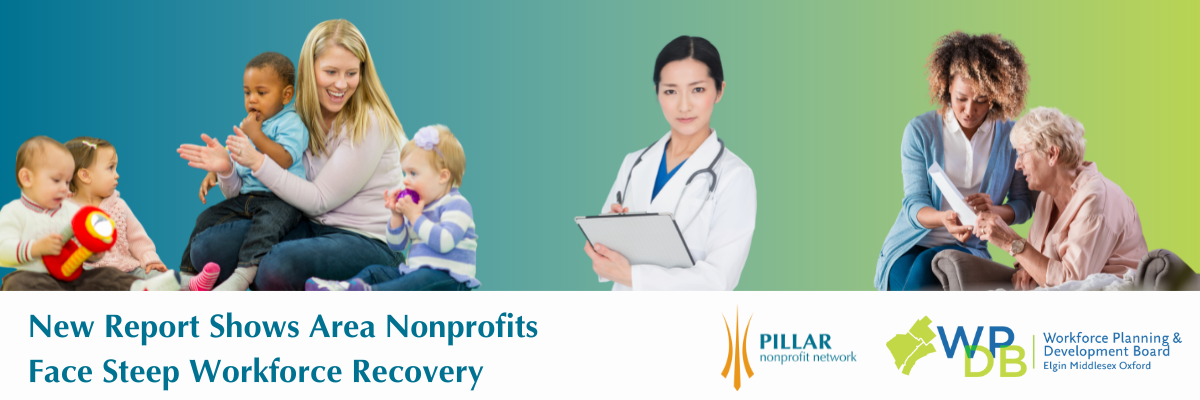
The Workforce Planning and Development Board report with illustrations is available on their website here.
Our findings include:
-
Nonprofits were slightly more likely to lose employees in 2021 than other employers (82% vs 77%), but almost two-thirds of separations in the nonprofit sector were layoffs, some temporary and some permanent, whereas layoffs only accounted for 14% of separations in other sectors.
-
Only one third of separations in the nonprofit sector in 2021 were quits as compared to 72% quits and retirements for other employers.
-
The significant difference in proportion of temporary layoffs (34% in nonprofits vs 12% for others) may reflect a greater tendency for nonprofit organizations to try to maintain a relationship with employees they can’t keep occupied or funded and, indeed, may indicate the precarity of funding itself. Notably, temporary layoffs were less likely to be reported as ‘COVID-related’ by nonprofit employers than other employers (58% vs 63%), and permanent layoffs in the nonprofit sector were even less likely to be reported as ‘COVID-related’ than in other sectors (42% vs 53%).
-
A slightly greater proportion of nonprofit employers hired employees in 2021 than employers in other sectors (87% as compared to 82% ), but hires by nonprofits were less likely to be for permanent positions (46% vs 62%) and more likely to be contract positions (38% vs 21%). Additionally, if permanent, nonprofit positions were less likely to be full-time and so still more precarious for hirees (permanent full-time 28% in nonprofits vs 40% for other employers).
-
Nearly two-thirds (65%) of nonprofit employers indicated that they see retention as “a concern” for their organizations. Notably, 61% of other employers indicated the same concern. As with other indicators, trends seem to be felt widely, but more acutely by nonprofit employers.
-
Selecting up to 3 strategies they are currently using to encourage retention, 56% of nonprofits included job flexibility (e.g., work from home arrangements, flex time, job sharing), 44% selected training opportunities, but only 36% indicated regular increases in salary, whereas other employers chose salary increases most often (46%), much more frequently than a range of other measures coming in no higher than 31%.
-
Asked “to what extent will ‘Finding qualified workers’ be a challenge for this business as the economy returns to a normal state of activity?” nonprofits and other employers both indicated very or somewhat challenging, but nonprofit employers to a lesser degree (74% vs 84%) and nonprofit employers were more likely to choose “somewhat challenging” (56% vs 28%) than “very challenging” (18% vs 56%).
-
Numbers are similar for “hiring qualified workers.” Nonprofit employers were less likely to indicate hiring qualified workers to be “very or somewhat challenging” (76% vs 84% for other employers) and, again, more likely to choose “somewhat challenging” (58% vs 30%) than “very challenging” (18% vs 55%) than other employers.
-
Interestingly, as in the analysis of care economy employers, nonprofit employers rated it more difficult (though only slightly in this case) to hire workers than to find them, suggesting that there are additional barriers to hiring than just availability of the workforce.
-
Numbers are similar for "Retaining qualified workers.” Nonprofit employers are less likely to choose “very or somewhat challenging” (60% vs 72%), but slightly more likely to choose “somewhat challenging” (43% vs 37%) and less likely to choose “very challenging” (17% vs 33%).
-
Although it represents a small number of responses in all cases, nonprofit employers are also 2-3 times more likely than other employers to choose “Don’t Know” to Workforce Challenges questions. This may reflect genuine uncertainty in the sector where many organizations operate without a “baseline” or “normal conditions,” always operating in a precarious funding and regulatory environment, more exposed to changing conditions than other employers.
-
Nonprofit organizations were slightly less likely to identify that some positions were hard to fill, though still greater than half did so (54% for nonprofit employers vs 65% for other employers).
-
Asked to choose from a list of reasons positions were hard to fill, nonprofit employers were more likely to identify “inability to compete with other employers (wage, benefits, profile)” than other employers with 21% of respondents selecting this reason, second among all the choices. For other employers, this was the fourth most chosen reason at 16%.
-
Nonprofit organizations were significantly more likely than other employers to “rate the availability of qualified workers in the Elgin-Middlesex-Oxford region” as excellent or good with half of all organizations choosing these responses (vs 28% for other organizations), though chiefly because they were almost twice as likely to choose “good”(46% vs 24%).
-
Though numbers are high for all sectors, nonprofits were slightly less likely to anticipate hiring in 2022 than other employers (76% to 81%), though only half as likely to “expect its overall number of employees to increase” in 2022 (28% vs 59%), perhaps also anticipating separations; 68% of nonprofits anticipated their workforce would “stay about the same” (compared to 37% for other employers) and, though the numbers are small in both cases, nonprofits were twice as likely to anticipate a decrease in total employees (4% vs 2%).
